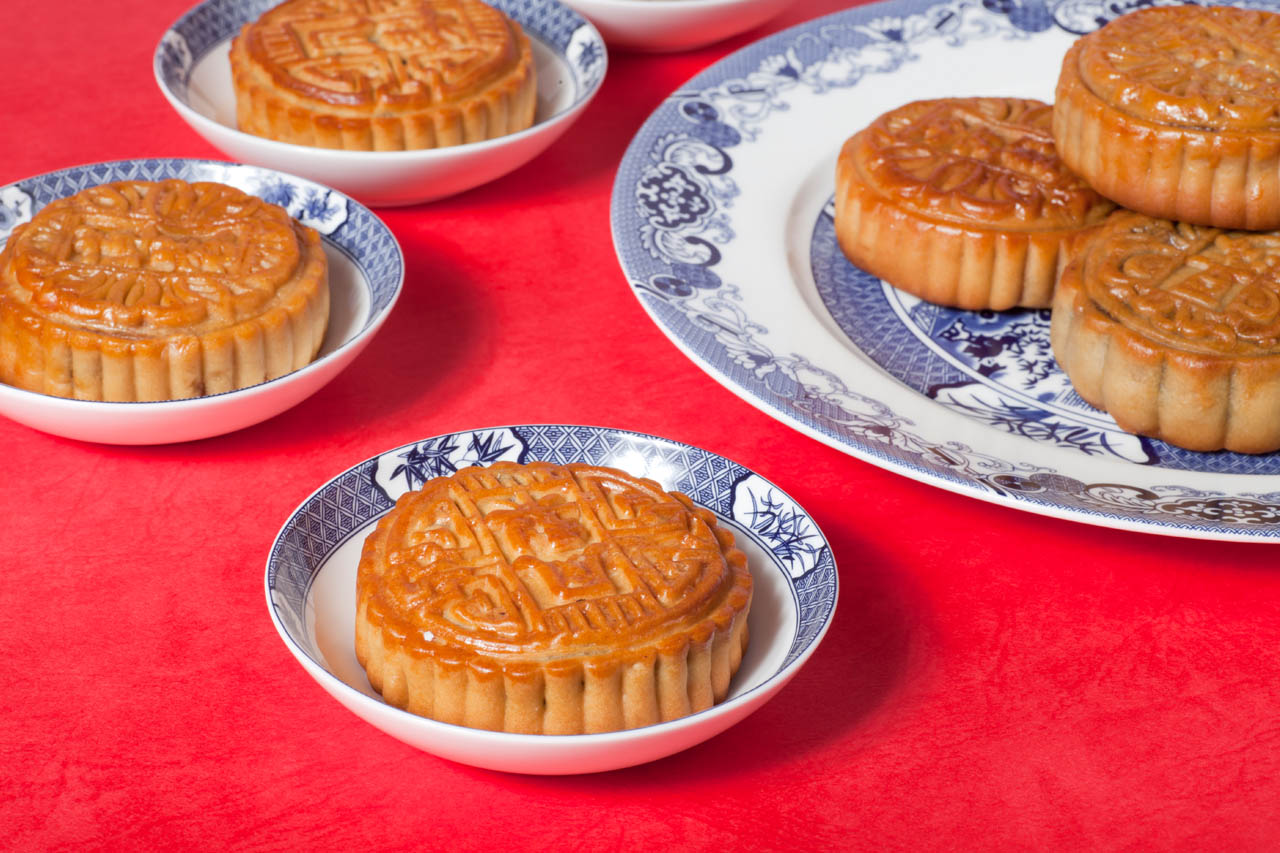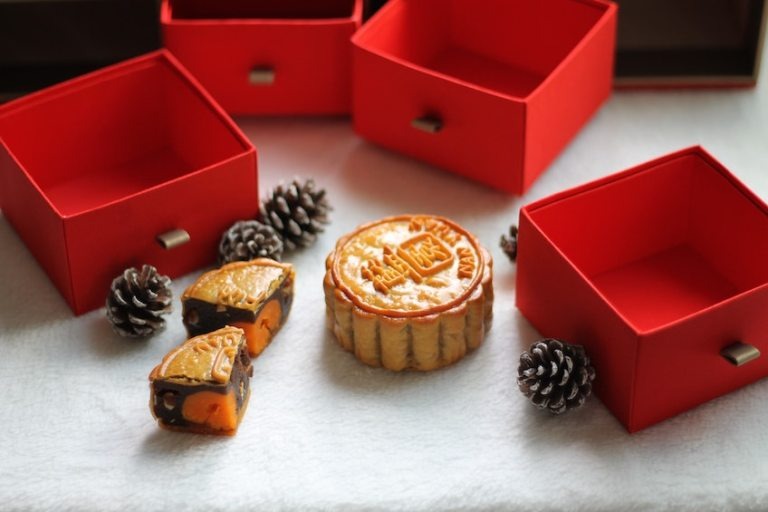
Dense, with a sugary richness contrasted ever so slightly by a golden brown pastry shell, mooncakes have a certain moreishness that make them a perfect indulgence for celebration. This is fitting, considering the role of mooncakes as a prized gift during the Mid-Autumn festival in China and throughout the world.
Why do we eat mooncakes during Mid-Autumn Festival?
The origin of mooncakes is spun from a fanciful legend of Moon Goddess Chang’e, who became a deity upon drinking a potion for immortality given by the gods to her heroic archer husband Hou Yi, celebrated for shooting nine of 10 suns from the sky. In one version, the separation of the two lovers due to the flight of Chang’e to the heavens leads a heartbroken Hou Yi to set out favourite foods in her honour — a tradition that has continued in the moon festival.
Mooncake delicacies have long been rumoured to be the basis of revolution throughout Chinese history, from the Manchu rebellion (a story, which turns out, may be equally mythological) to the recent political uprisings in Hong Kong. The round cakes are gifted and shared with family, friends and business acquaintances to symbolize reunion each year on the 15th day of the eighth month of the lunar calendar. Today, mooncakes are made throughout China, although, as with much Chinese cuisine, regional variations abound.
When is Mid-Autumn Festival this year?
Mid-Autumn Festival starts on September 29 this year.
Where can I find mooncakes?
In larger Chinese supermarkets, you can often find more than 100 kinds of mooncakes and be warned: these delicacies don’t come cheap. Around the Mid-Autumn Festival, store shelves and bakery displays begin to fill with colourful boxes of these treats.
Although you can certainly make mooncakes at home if you’re looking for a project, part of the pleasure of these pastries is opening the elaborate wrapping or box and getting that first glimpse of the intricate lettering or patterned design of the pastry created with a specialized mold that varies by bakery or manufacturer. Cutting through the thin golden crust to reveal the dense filling inside is also a satisfying sight, revealing the splendid treasures beneath the patterned pastry.
If you want to attempt them at home, molds can be found in some Asian supermarkets and restaurant supply stores, and come in either wood or plastic for easy extraction, according to Carolyn Phillips’ comprehensive work, All Under Heaven.

Pexels
What kinds of mooncakes are there?
From traditional to modern, here’s a rundown of the most common types you’re likely to encounter.
Sizes
Mooncakes generally come in two sizes, depending on the type: a larger 3-inch version and a smaller 1-inch mini cake.
Shells
The most traditional version of mooncakes uses lard or shortening to create a tender light brown shell, easily pressed into a mold and shaped. One variation you may see on store shelves today, however, are the increasingly popular snowy or snow skin mooncakes, which are unbaked and use rice flour, giving them a mochi-like consistency.
Related: Make These Soft and Fluffy BBQ Pork Bao Buns
Fillings
One of the most commonly made types of mooncakes are the ones using red bean paste, resulting in a dark brown filling the colour of a Mexican mole sauce or roux for gumbo. The texture is soft and chewy but easily sliced, and densely sticky sweet.
Lotus seeds, on the other hand, produce a lighter filling based on a laborious process involving shelling, boiling and pureeing the seeds to form a paste. The creamy caramel coloured filling is smooth and delicately sweet, contrasting with the thin pastry shell.
Although these two fillings are the staples, bakeries and manufacturers have gotten increasingly creative, using fruit such as durian or dates, nuts or even egg custard as fillings to cater to a wider audience.

Unsplash
In addition to the red bean, lotus seed, and other fillings that may come inside your mooncake, salted egg yolks are often added to represent the full moon in autumn. Whether you choose a one or two yolk filling is up to your tolerance for rich textures: brined duck eggs are used for both savoury and sweet applications in Chinese cooking and the salting process turns the yolks into the essence of deeply yellow egginess. If you really want to go all out, three egg yolk versions are available, but not for the faint of heart.
Whatever your choice, be sure to share your mooncakes with friends and family, the way that they were meant to be eaten — in celebration and amidst the joy of reuniting.
